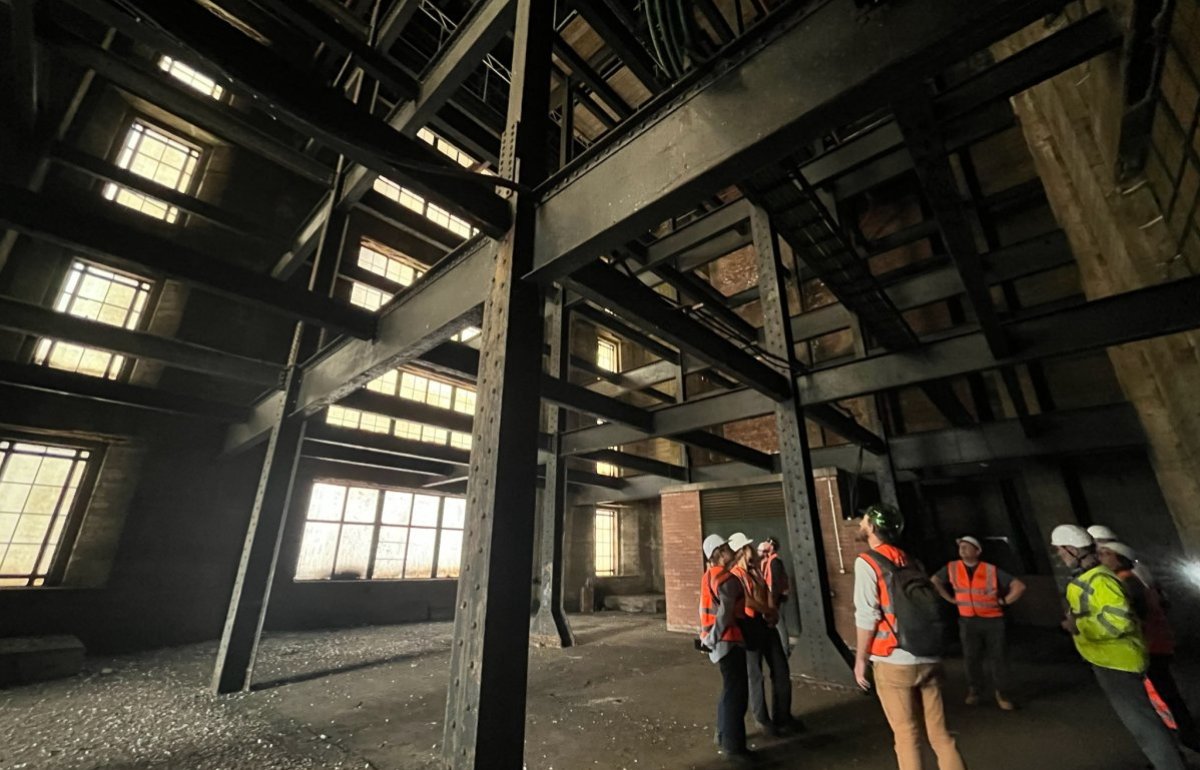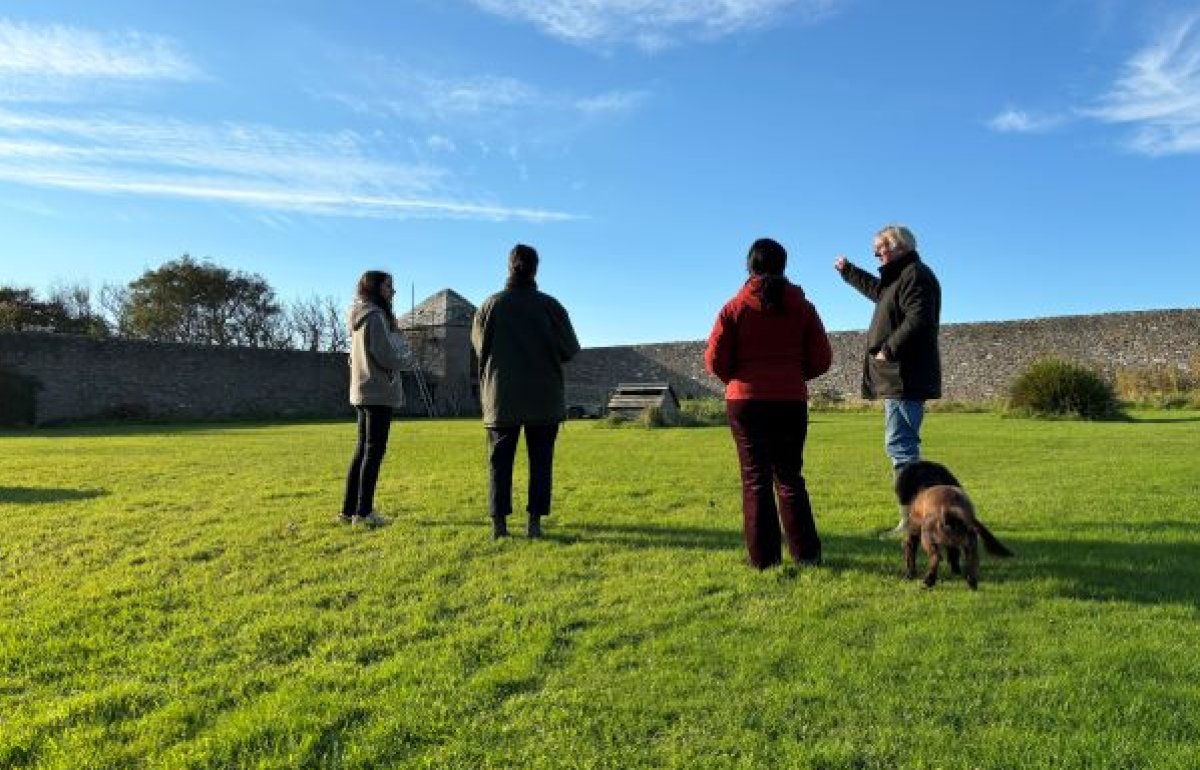SPAB’S 2018 Scholars hit the conservation trail
Share on:
There is no parallel in the architectural conservation world to the annual SPAB (Society for the Protection of Ancient Buildings) Lethaby Scholarship. The three newest recruits to this long established training scheme for young architectural and building professionals now join a roster of talented individuals, many of whom care for the most significant buildings in Britain.
Pamela Dziwulska, George Hodgson, and Matt Loosley (all architects) have embarked on a prestigious nine-month programme of site, workshop and studio visits across the UK.
The aim is for SPAB’s Scholars to gain hands-on experience of building conservation in action guided by experts in the field and to use this knowledge to inform their own approach in their working lives. Their travels will enable them to meet fellow architects, building specialists and craftspeople working in traditional ways. Their travels will enable them to meet fellow architects, building specialists and craftspeople working in traditional ways. Starting with a week in the south east of England they have visited projects at Westminster Abbey and Hampton Court Palace, as well as small-scale, domestic projects in central London.
The group will move further afield over the next nine months visiting castles in the Inner Hebrides, exploring the country’s cathedrals, building with mud in Cumbria and visiting slate quarries in Wales.This highly regarded educational scheme has run for more than 80 years. Since 1930 it ha s set over 150 young architecture and building professionals on the road to positions of great responsibility in the conservation sector. The Scholarship continues to have enormous relevance. With growing concern at the lack of skilled professionals with the knowledge needed to deal sensitively with historic buildings, SPAB knows that the best way to learn about construction and repair methods available today is out on site.
The SPAB Lethaby Scholarship is awarded annually to up to four young architects, building surveyors or structural engineers who have completed their college-based training and have a demonstrable enthusiasm for historic building conservation. After spending the first six months as a close-knit group, they separate for the last three months of the programme, developing their own specific areas of interest relating to the life and culture of the British Country House.
Former SPAB Scholars are among the today’s leading UK conservation experts, caring for many of the most significant buildings in Britain – some are cathedral architects, some look after palaces, great country houses, National Trust houses and English Heritage sites. Others care for lesser known gems of equal historic and architectural interest. The Scholarship is a prestigious and rigorous educational award designed to foster excellence and promote understanding of the unique skills and crafts that continue to underpin our built heritage.
2018 SPAB Scholars’ biographies
Pamela Dziwulska
Age: 32
Qualifications:
Bachelor of Architectural Studies, Unitec, Auckland, New Zealand: 2005-2007
Master of Architecture (Professional), Unitec, Auckland, New Zealand: 2008-2010
Employment:
Jackie Gillies + Associates, Architectural Graduate: 2012-2014
Salmond Reed Architects, Registered Architect: 2015 – present
Pam became interested in architecture during her secondary school studies in art and art history, which focused on the colonial and agricultural architecture of New Zealand. From there she went on to study architecture at Unitec - a polytechnic based architecture school. Unsatisfied with the emphasis placed on contemporary construction methods combined with a personal interest in sustainable building techniques, Pam began working at a practice that concentrated on heritage buildings so she could expand her knowledge on traditional building materials.
At a heritage practice on the South Island, Pam worked on a schist stone cottage from Arrowtown’s gold mining days and a colonial timber villa in Queenstown. After moving to Auckland, Pam joined Salmond Reed Architects where her work is based around conservation, repair and design solutions for heritage buildings.
After the SPAB Scholarship, Pam’s aim is to return to New Zealand to help improve the philosophy and care of heritage buildings and sites. She hopes to retain historic buildings that may fall victim to re-development of central urban areas and earthquake building regulations.
George Hodgson
Age: 30
Qualifications:
BA (Hons) Architecture, The University of Manchester 2010
MArch, Kingston University 2015
PgDip Architecture, Kingston University 2017
Employment:
DNA Architecture, London 2011 – present
George’s interest in historic buildings has developed during his architectural education. His postgraduate design projects critiqued contemporary attitudes toward conservation. The projects involved a combination of the sympathetic re-use of old buildings alongside sensitive new architectural propositions within the context of UNESCO World Heritage Sites. It was at Kingston University where he first heard about the SPAB and the Scholarship. Whilst studying, George worked for a small architectural practice in south London for the past 6 years. In 2017, his work repairing a Grade II listed 16th century farm house in Surrey introduced him to practical building conservation philosophies and cemented his desire to work on historic buildings in the future. Recognising the merits of practical-based learning, George undertook a City & Guilds training courses in joinery and bricklaying. The Scholarship appealed to his hands-on nature and he looks forward to working closely with and learning from specialist craftspeople, whilst filling sketchbooks along the way.
Matt Loosley
Age: 26
Education:
BA (Hons) Architecture, Huddersfield University 2012
March, Westminster University 2015
RIBA Part 3, RIBA NW 2016
Employment:
Sheppard Robson Architects (2015-present)
Matt's interest in historic buildings began in 2011 when he designed an intervention for his local derelict corn exchange in his home town of Stowmarket in Suffolk, whilst studying architecture at Huddersfield. The design won a regional RIBA competition and the project, known as the John Peel Centre, was built, transforming the 1880s building into an arts centre for the local community, integrating the building back into civic life.
In 2014, Matt received the Worshipful Company of Chartered Architects' travel award to document the modernist ruins of India. Travelling out to India for three weeks, he photographed and surveyed the buildings in Chandigarh and Ahmedabad. This study formed the basis of his Masters thesis on the 'Modernist Ruins of India', investigating the technical, economic and cultural factors behind the decline of these internationally renowned buildings.
More recently, Matt has been based in Manchester working on large scale refurbishments of Edwardian offices, warehouses and hospitals until qualifying as an architect in 2017.
Sign up for our email newsletter
Get involved


